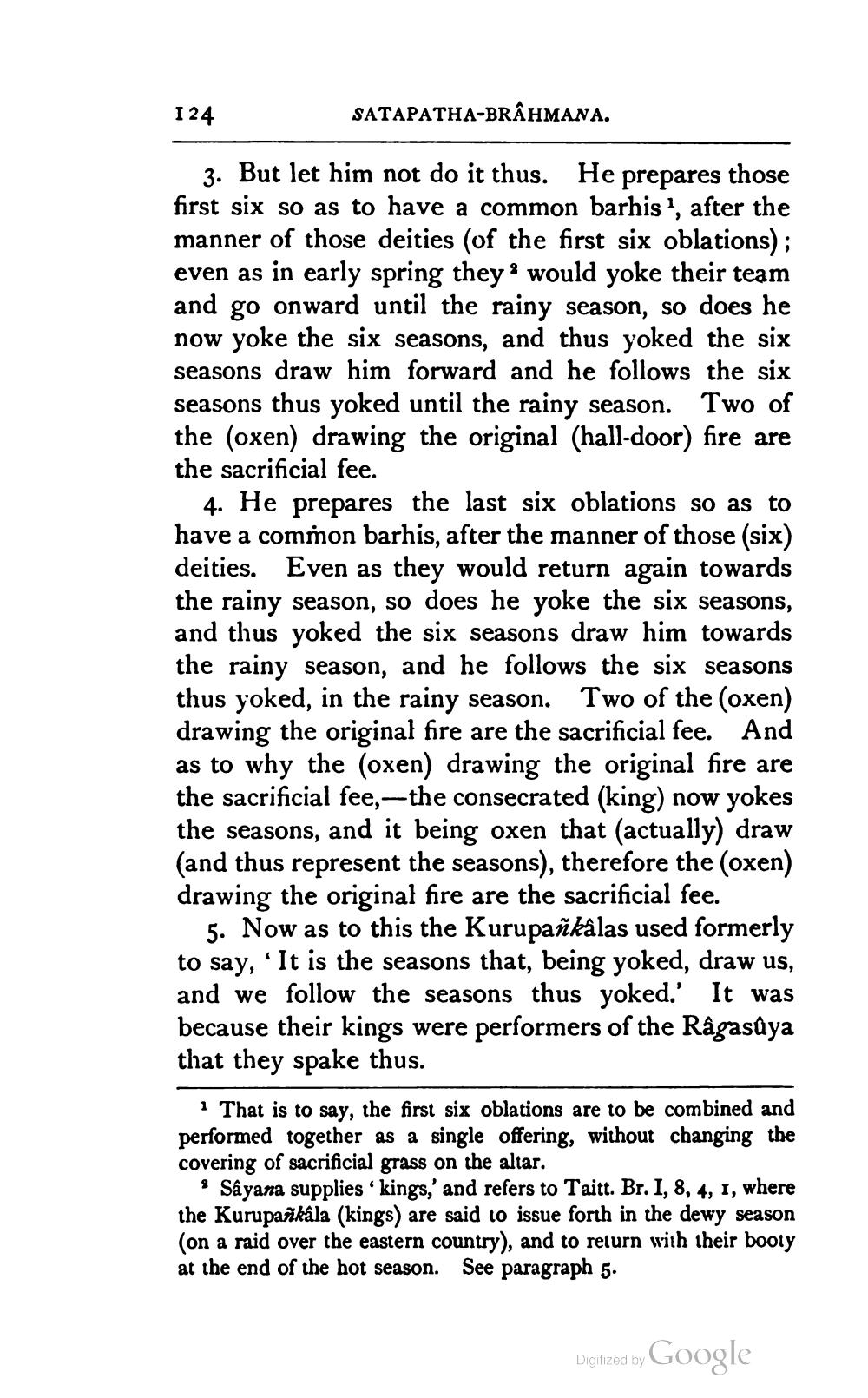________________
SATAPATHA-BRAHMANA.
2
3. But let him not do it thus. He prepares those first six so as to have a common barhis 1, after the manner of those deities (of the first six oblations); even as in early spring they would yoke their team and go onward until the rainy season, so does he now yoke the six seasons, and thus yoked the six seasons draw him forward and he follows the six seasons thus yoked until the rainy season. Two of the (oxen) drawing the original (hall-door) fire are the sacrificial fee.
124
4. He prepares the last six oblations so as to have a common barhis, after the manner of those (six) deities. Even as they would return again towards the rainy season, so does he yoke the six seasons, and thus yoked the six seasons draw him towards the rainy season, and he follows the six seasons thus yoked, in the rainy season. Two of the (oxen) drawing the original fire are the sacrificial fee. And as to why the (oxen) drawing the original fire are the sacrificial fee,-the consecrated (king) now yokes the seasons, and it being oxen that (actually) draw (and thus represent the seasons), therefore the (oxen) drawing the original fire are the sacrificial fee.
5. Now as to this the Kurupaйkâlas used formerly to say, 'It is the seasons that, being yoked, draw us, and we follow the seasons thus yoked.' It was because their kings were performers of the Râgasûya that they spake thus.
That is to say, the first six oblations are to be combined and performed together as a single offering, without changing the covering of sacrificial grass on the altar.
Sâyana supplies 'kings,' and refers to Taitt. Br. I, 8, 4, 1, where the Kurupankala (kings) are said to issue forth in the dewy season (on a raid over the eastern country), and to return with their booty at the end of the hot season. See paragraph 5.
Digitized by
Google




